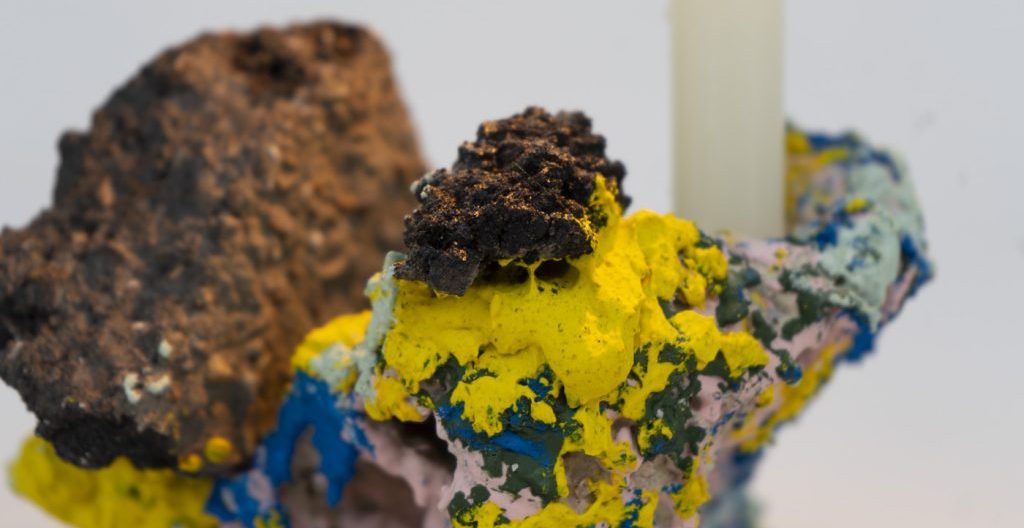Disability
This topic intrigues me because I am interested in the social model of disability. Artist Jess Thom of Touretteshero explains, ‘The social model says people aren’t disabled by their impairments but by a failure to consider difference in the way society is organised. For example, it’s not my tics that mean I can’t call up my Internet service provider to sort out a fault, it’s their voice-activated system that disables me and means I can’t do it myself’, (Thom, 2012). As a person with hearing loss myself, my NHS hearing aids allow me to hear everything, meaning that I don’t feel disabled when I am wearing them.
Watching the videos made me think about the importance of dialogue. Chay Brown highlights the importance of raising awareness of how neurodivergent LGBTQ+ people might communicate differently. ‘If you struggle with social situations either through anxiety or because you are autistic, learning the unspoken codes of behaviour is really challenging and it can add to people’s anxiety’ (Brown, 2023). This can impact his ability to feel fully relaxed in the LGBTQ+ spaces which are supposed to be welcoming.
Ade Adeptian describes the inclusive space of the Paralympics, ‘when you take away those things that hold people back, you give someone the adequate sports equipment, the correct coaching, you give someone the event where they can be the best that they can be’ (Adeptian, 2020). He shows that it is far more important to design an inclusive approach, rather than expect individuals to have to change to fit a system. He also shows this is often not extended to marginalised identities, ‘the black community, for hundreds of years we have faced oppression and we have never been able to properly shine because there is inbuilt racism.’ (Adeptian, 2020).
Christine Sun Kim highlights this frustration through her approach to art. ‘I think I am always a little bit jealous of artists who have the privilege to be misunderstood. For me I automatically feel like I need to explain what things mean. I have to say “no, its not this, its that” and I think that stems from a place of how misunderstandings can affect my rights.’ (Sun Kim, 2023). This reminds me how important active listening is, when trying to tackle inequality.
As an AL at UAL, it is unusual to be in spaces where I get to be part of dialogue about inclusive practices. However, when teaching the Creative Unions unit at CSM we recently met as a staff team to collaboratively discuss the approach to the unit. Dialogue allowed for ideas to develop and colleague Samia Malik highlighted that students do not receive anti-racist training when staff do. Changing this practice would have a huge impact, as harm can be perpetuated student – student. Likewise, the videos showed that if inclusive practices were openly talked about when designing courses and spaces, they would benefit all learners, as a more comfortable and compassionate space could be created.
Adeptian, A (2020) Paralympics GB, Ade Adepitan gives amazing explanation of systemic racism, https://www.youtube.com/watch?v=KAsxndpgagU, Accessed April 2024
Brown, C (2023) Intersectionality in Focus: Empowering Voices during UK Disability History Month 2023, https://www.youtube.com/watch?v=_yID8_s5tjc&t=519s Accessed April 2024
Thom, J (2012) Why I Don’t ‘Have’ a Disability, https://www.touretteshero.com/2012/11/10/why-i-don%E2%80%99t-%E2%80%98have%E2%80%99-a-disability/ Accessed April 2024
Sun Kim, C (2023) Christine Sun Kim in “Friends & Strangers” – Season 11 | Art21, https://www.youtube.com/watch?v=2NpRaEDlLsI Accessed April 2024

Anna, your post on disability resonated deeply with me on a nuber of levals, but particularly your insightful opening exploration of the social model of disability as articulated by Jess Thom. The quote, “The social model says people aren’t disabled by their impairments but by a failure to consider difference in the way society is organised,” truly challenged my understanding of what disability is. It made me realize that disability is not solely rooted in an individual’s impairments but is profoundly influenced by our societal structures and systems that accomadate the majority able communities predomantly. This notion compelled me to reflect on systems of scale and how our societal norms and structures can either enable or disable individuals, ultimately shaping the breadth of their experiences and opportunities, as well as our own. It’s a profound realization that highlights the importance of creating scaleable inclusive environments and advocating for systemic change to ensure equity and accessibility for all.
You also rightly highlight Chay Brown’s discussion on communication challenges for neurodivergent individuals within LGBTQ+ spaces and the significance and prevalence of anxiety arising from this. It is pertinent that we are looking at alternative ways of creating/ constructing environments where diverse communication styles are felt, considered, validated, accommodated and valued in order to foster understanding and inclusivity.
Agree that there is much more need for dialogue within UAL and it needs to be prioritised as a given, and students also need to be engaging in the same conversations and training.
Thanks for sharing Jess Thoms work, interesting to see how creativity can come become a way to occupy space. There is a great show on at the Wellcome Collection by Jason Wilsher Mills at the moment. For him, becoming disabled as a child ‘was an awakening of his creative life becoming an artist. You might have seen it already, but if not would recommend 🙂
Important that galleries are bringing these issues to the fore, exhibition was packed. I can’t imagine this 20 years ago, hopefully social attitudes are slowly shifting?